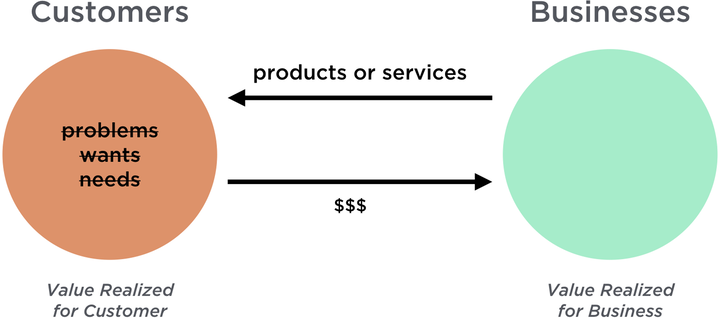Photo by Skitterphoto from Pexels
“Escaping the build trap By Melissa Perri” is always on the list of must-read books for Product Managers.
This blog is the first part of my book summary. You can find the second part here.
What is the build trap? and what is the book about?
Build trap occurs when companies focus on releasing features rather than delivering real value to customers. Success is measured in terms of output rather than outcome.
In this book, the author provides guidelines on getting out of the build trap by creating a product-led organization.
How do companies get into the build trap?
Companies get into the build trap when they associate value not with the outcome they create for businesses and companies but with the number of things they produce.
The Value Exchange System
 |
|---|
| https://www.oreilly.com/library/view/escaping-the-build/9781491973783/ch01.html |
Customers realize value when their wants and needs are fulfilled. Only then do they provide value back to the business. Value, for the business, is anything that benefits the business - money, positive reviews, references, etc. Every feature/product you build should result in business value.
When companies do not understand the customer’s problems, they cannot provide value to the customer. They look for an easier way to measure success - the number of features delivered.
We need to get the employees close to the customers so they can understand the customer’s pain points. Only then, can we expect the employees to build products that create customer and business value.
Project Vs Product Vs Services
Product is the vehicle through which a team delivers value to its customers; it does not require human intervention to provide value to the customer. Examples would be an iPhone, LinkedIn, etc.
Services require human intervention to deliver value to customers. An example would be an accountant preparing your taxes.
Many companies use a combination of products and services to deliver value.
A project is a discrete scope of work with a specific aim, timeline and resources. Any feature enhancement done to a product can be considered a project. Projects are an essential part of product management. But product iterations should go on even after a project is done. You need to scope out new projects to reach the outcome.
What is a product-led company?
A product-led company is one which
- optimizes for business outcomes,
- aligns product strategy to goals and
- prioritize the most effective products that will help develop those products into sustainable drivers of growth.
What we know and what we don’t
 |
|---|
| Photo by Leeloo Thefirst from Pexels |
| Known | Unknown | |
|---|---|---|
| Known | Facts - basic needs that are required to do the job. An example could be requirements mandated by government regulations | Questions - when you have clarity enough to know which questions to ask. For example, these could be assumptions that need to be tested |
| Unknown | Intuition - from years of experience; when you feel like this is the right thing to do. | Discovery - when you don’t know what you don’t know. These are discoveries you get when talking to customers, from data analysis or research. |
Product management is the domain of recognizing and investigating the known unknowns (questions) and of reducing the universe around the unknown unknowns (discovery). Anyone can run with solutions based on known unknowns. But it takes a certain skill to be able to sift through the massive amounts of information and to identify the right questions to ask and when to ask them.
Product managers identify features and products that will solve customer problems while achieving business goals.
Hope you found these notes helpful. You can find the second part here.
Thanks for reading.